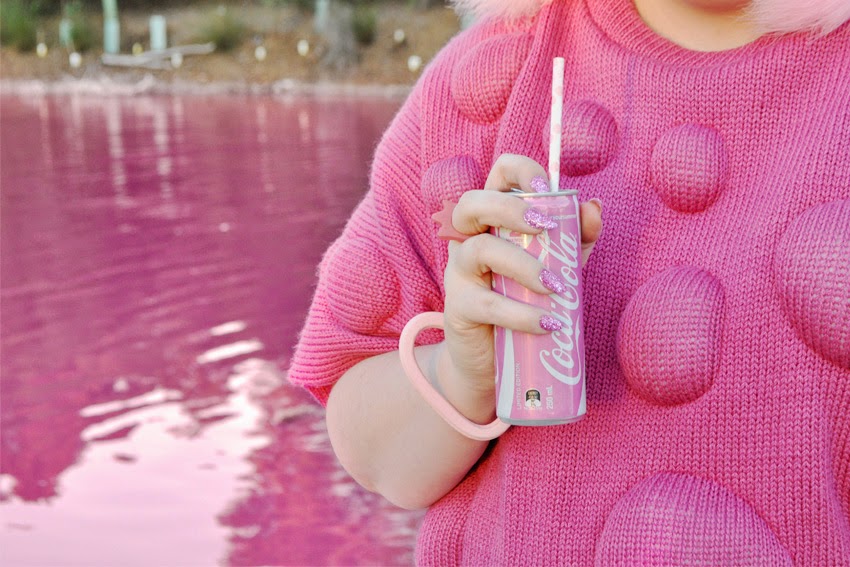The deliberate noticing exercise prompted me to think about a form of media that’s very nearly always within urban eyeshot: packaging. From where I’m sitting in the City Library I can see the label on my iced tea and on the packet of chips I’m eating, an apple sticker someone’s put on the desk, a Mt Franklin bottle and a packet of gum. Beyond food there’s stationary, computers (does the outside of a laptop count as packaging?), a bag from Zara… In fact, the only non-branded packaging I can see is a banana skin.

“I don’t actually drink full fat coke… here I am advertising coke for free just cos of a pink can.” (image by Hayley Hughes)
Packaging is powerful, as illustrated above by blogger Fashion Hayley, who only bought the can to match her outfit during a shoot. I’ve been known to save a good-looking, sturdy shopping bag and carry things around in it, partly because it’s practical and partly (mostly, let’s face it) for the aesthetic.
So if packaging means so much, what happens when it morphs into litter?
I gave friends and family, very informally, a hypothetical situation. Take two near-indentical products — Fanta and Sunkist, for example — how would they feel if they always saw Fanta cans crumpled on the ground? Would it make a difference to what they bought? Honestly, my most common response was “I don’t really think about it”, followed by something along the lines of “if it was common knowledge that everyone littered it, maybe not” and “I wouldn’t want to be associated with it”.
People reacted more strongly if they’d seen someone actually do the throwing away: “He threw a whole thing of chicken nuggets out of the car window. They went everywhere, all over the nature strip.” Had they bought nuggets since? “No.” It was an ugly memory, forever associated with McDonalds. My friend didn’t want to associate herself with the kind of people who throw rubbish out of a moving car.

A Torontonian anti-litter campaign: “Littering Says a Lot About You” (image via Feel Destain)
My investigation failed to reveal much, unsurprisingly. My tiny sample pool seemed to be more concerned with who was littering instead of what. That said, if they associated a product with a specific act of littering they did think negatively of it. That’s one of the downsides to distinctive packaging; you can recognise it, even when it’s tossed from a fast-moving car. The brighter and more attractive it is, the more it stands out for better or worse.